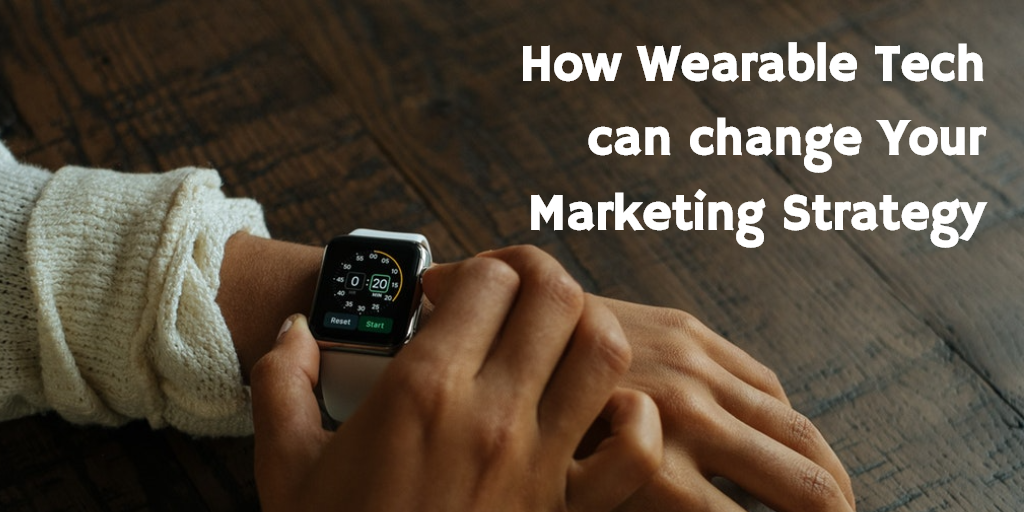Four Ways Wearable Tech Could Change Your Marketing Strategy

When Apple unveiled the iPhone 6 earlier this month, it also unveiled the Apple watch which is expected to be out in early 2015. The use of a watch by Apple is a significant push into the realm of wearable technology. While this concept is nothing new, industry leads are predicting competition to heat up over the next twenty-four months.
For marketers, the impact of wearable technology remains to be seen. However, after doing a bit of research I came across an article by Erin Rodat-Savla; 4 Ways Wearable Tech Could Change Your Marketing Strategy.
The author quotes several industry analysts as to what wearable technology is going to do for marketers. Redg Snodgrass, co-founder of technology accelerator Wearable World, offers modest reassurance. He says, “The good news is your budget allocation is safe for 2014. You’ve got at least six months before early adoption of wearables takes off.”
Erick Schonfeld, executive producer of DEMO, International Data Group’s (IDG) emerging technologies conferences, offers a similar forecast, underscoring that different wearable categories are developing at different rates. “If it’s Fitbits and Nike Fuel bands, wearable tech is already hitting the mainstream today. If it’s Google Glass, it’s still an open question whether the masses will ever adopt it. I see industrial and business applications gaining traction first for Glass over the next two to three years.”
What the Apple watch, Google Glass etc. all have in common is simple. They are items you can wear that happen to have computing power. Their potential impact on our behavior and expectations — and our marketing strategies — is far more complex. As a feature in WIRED magazine recently explained, the newest wearable devices aim to reduce “the time between intention and action”. Even going as far as the day when “the device knows what users want before they want it.”
The wearables market is developing quickly. Snodgrass believes marketers need to carve out a small amount of budget now to do what he calls micro-tests. What should we be on the lookout for in these experiments?
Four ways in which you’ll find you need to adapt your marketing strategies:
- Make it (even more) glanceable: Snodgrass calls these new mobile demands “glanceable marketing,” requiring companies to winnow information and messages to even more relevant, usable information that comes across in less than two seconds. To do justice to wearable t
 ech, marketers will need to consider questions like: What information would our customers consider “just in time” and when?
ech, marketers will need to consider questions like: What information would our customers consider “just in time” and when? - Tap into location and emotion: The ever-present technology will challenge marketers to develop “an EKG understanding of our end users,” as Snodgrass characterizes it. The minuscule sensors embedded in smart clothing will read people’s biological responses when purchasing and using products and services. Responding to a customer’s context may no longer simply be about her location, but about their emotional state.
- Integrate experience and create convenience: Snodgrass offers a scenario: “You have a meeting across town in 20 minutes. Traffic reports indicate the trip will take 35 minutes. What network of companies, devices, and services can help alert you that you’re running late based on your distance from the meeting, call Uber for a car, notify your colleagues waiting across town, and (because we can tell you’re stressed) pre-order a drink?” Calling this “convenience marketing,” Snodgrass contrasts the efforts to create that kind of integrated experience to pushing promotional messages about your brand: “If you’re able to deliver a service right when I need it, you’re making my life easier. It’s a convenience, and not seen as a marketing position.”
- Get ready to interpret (even more) data: Setting aside the inevitable questions of personal data and privacy, Snodgrass acknowledges that the grand promise of wearables depends on a Holy Grail of marketing: a team and plan that are able to make profitable heads or tails of data. No company is currently broadcasting its intention to sell the data generated from wearables. Although, Snodgrass insists it’s only a matter of time.
What to do next?
For marketers, this is the time to dabble in low-risk experiments and back-of-the-napkin brainstorms to ask some tough questions. What will an even, slow rise of these sensors and devices — and (perhaps more importantly) the network between them — do to our customers’ and clients’ expectations? How will they add to the mounting pressure to be customer-driven and data-driven?
We all know how hard it is to change behavior. But that doesn’t mean we won’t have to adapt to changing behaviors.
